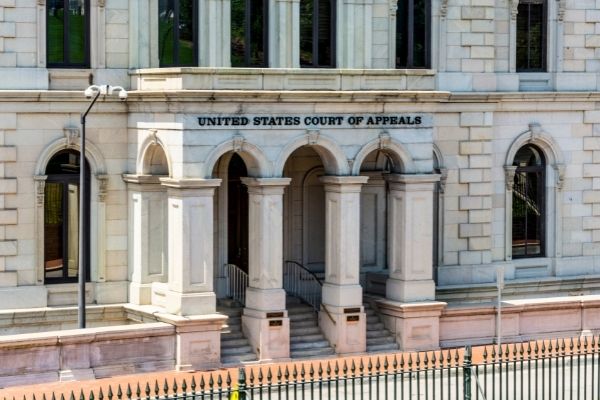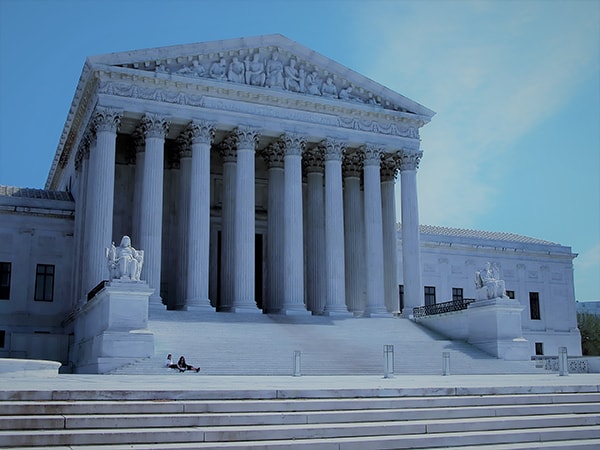Debunking the Refine of Federal Appeals: What You Required to Know
Browsing the intricate world of federal charms can often feel like passing through uncharted waters for those unknown with the process. Comprehending the nuances of appellate court jurisdiction, the complexities of submitting a notification of charm, offering a compelling quick, and making an influential oral argument are vital parts that can significantly impact the result of an instance. By deciphering the layers of intricacy surrounding federal charms, people can acquire a clearer understanding into the mechanisms that regulate this critical point of the legal system.
Comprehending Federal Appeals Refine
Looking into the elaborate realm of the federal charms process introduces a structured and systematic trip with the judicial system - federal antitrust appeals. Federal appeals act as an essential mechanism for examining decisions made by lower courts. Recognizing this procedure is essential for any person involved in legal procedures at the government level
The procedure commonly starts with an event dissatisfied with a lower court's ruling submitting a notice of allure. This triggers an evaluation by a greater court, where a panel of judges evaluates the lawful disagreements provided by both events. Briefs laying out the lawful thinking behind each party's setting are sent, and dental debates might be heard to make clear complicated issues.
The appellate court's decision is based on a comprehensive examination of the lower court's process and the debates provided. The courts do not reexamine facts yet concentrate on whether lawful mistakes happened that affected the lower court's choice. As soon as the appellate court reaches a decision, it can affirm, reverse, remand, or modify the reduced court's judgment, supplying quality and finality to the lawful dispute. Understanding this process is crucial for navigating the complexities of federal allures effectively.
Appellate Court Territory Described

Appellate courts have territory over certain sorts of situations, usually those involving legal mistakes, step-by-step issues, or inquiries of regulation as opposed to accurate disputes. The jurisdiction of appellate courts is normally outlined in laws and legislations that regulate the court system. Understanding appellate court jurisdiction is vital for events associated with the charms procedure as it identifies whether a situation is eligible for testimonial and the degree to which the appellate court can intervene in the lower court's decision.
Declaring a Notification of Appeal
The initial action in starting the federal charms process includes filing a Notice of Charm with the ideal appellate court. federal securities fraud appeal attorneys. This critical record formally alerts the court and the various other parties involved in the case that the appealing party intends to look for an evaluation of the lower court's choice. Filing a Notice of Allure is a stringent procedural demand that establishes the appellate process in movement
When preparing the Notice of Appeal, it is necessary to make certain conformity with the details guidelines and standards of the appropriate appellate court. The record must normally consist of information such as the case name, the reduced court's name, the date of the judgment being appealed, and a concise declaration showing the premises for the charm.
When filing a Notice of Charm,Timeliness is of the essence. Missing out on the deadline for sending this record can cause the appeal being dismissed, emphasizing the relevance of timely and exact initiation of the appeals procedure. It is recommended to look for legal assistance to navigate the complexities of filing a Notification of Allure successfully.
Instruction and Oral Argument
In the appellate procedure, presenting composed briefs and engaging in dental arguments play pivotal roles in advocating for the appealing party's placement before the appellate court. Briefs are detailed legal files that lay out the events' debates, lawful authorities, and evaluation supporting their settings. These written submissions supply the court with a detailed understanding of the truths of the case, the pertinent regulation, and why the appealing event believes the lower court's choice need to be rescinded.
Following the entry and testimonial of the briefs, dental debates supply the celebrations a possibility to additional clarify their positions, resolve any kind of questions the appellate judges may have, and emphasize vital factors from their composed briefs. Dental arguments are an opportunity for the lawyers to convince the courts through spoken campaigning for and reactions to inquiries from the bench.

Receiving the Appellate Court Decision

Conclusion
Understanding the appellate court jurisdiction, filing a notice of allure, preparing briefs, and providing dental debates are all vital parts of this procedure. Inevitably, getting the appellate court decision can supply clearness and resolution to legal disagreements.
As we advance from comprehending the government allures procedure to dissecting the complexities of appellate court jurisdiction, a basic facet comes to light regarding the authority and limitations of these greater courts in the lawful landscape. Appellate court jurisdiction refers to the scope of situations that a particular appellate court has the power to determine and evaluate upon. Unlike trial courts that listen to situations for the first time, appellate courts are limited to assessing choices made by lower courts. Understanding appellate court jurisdiction is vital for events entailed in the appeals process as it identifies whether a situation is eligible for evaluation and the degree to which the appellate court can interfere in the reduced court's choice.
Whether the appellate court verifies, turns around, or that site remands the lower court's choice, recognizing the implications of the judgment is crucial for all celebrations included in the appellate process.